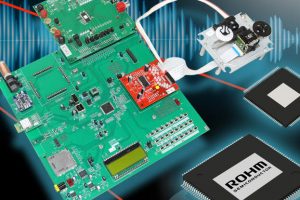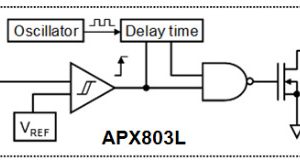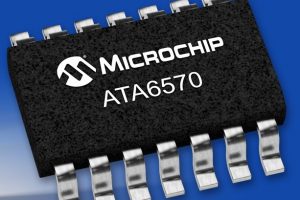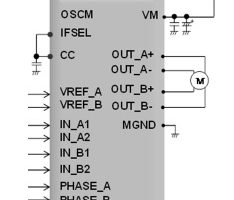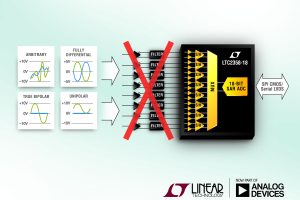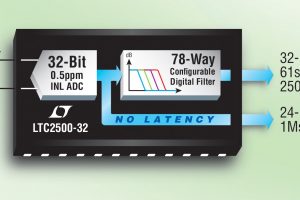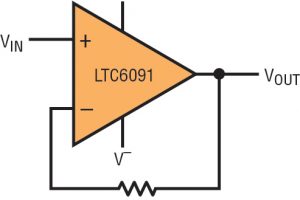TI has launched an inductor-inductor-capacitor (LLC) resonant controller with an integrated high-voltage gate driver that enables, claims TI, the industry’s lowest standby power, as well as longer system lifetimes. The UCC256301 provides a cost-effective system solution that helps meet stringent energy-efficiency standards for a wide range of AC/DC applications, including digital televisions, gaming adapters, desktop computer and notebook adapters, and ...
Analogue / Linear / Mixed Signal ICs
The latest Electronics Weekly product news on analogue, linear and mixed-signal ICs.
Reference design for high resolution audio player with Bluetooth
Rohm has anounced a high definition audio system reference design, aimed at Hi-fi audio equipment, Bluetooth speakers, separate audio components and USB audio DACs.
Silicon Labs unifies chips for car radios
Silicon Labs has announced a family of car radio receiver chips with a common software API, claiming designers can share R&D effort across multiple product lines, from low-cost, single-tuner AM/FM radios to high-performance systems with multiple tuners and antennas. Si4795x (branded Global Eagle, (right)), Si4796x and Si4797x (together branded Dual Eagle) are analogue AM/FM receivers and digital radio tuners, all with ...
Reset chip draws 1μA
Designed to support the supervisory circuits of microprocessors, the APX803L micro-power voltage detector from Diodes offers a detection between 1.2 and 5.0V in 0.1V steps, while consuming 1μA (typ, 2.5μA max). Threshold accuracy is ±1.5%, and no external components are required. Whenever the monitored power supply rail drops below the chosen threshold, the APX803L asserts a reset signal within 20μs ...
5μV offset op amp consumes only 1.3μA
LTC2063 from Analog Devices draws just 1.3μA (typ, 2μA max) from a 1.8V supply and achieves 5μV maximum input offset at 25°C
Microchip offers automotive Grade 0 qualified CAN transceiver
Microchip has introduced a range of CAN transceivers which includes an automotive Grade 0 qualified device. Designated the ATA65XX family, the devices support the recently established CAN FD (Flexible Data-rate) protocol for up to 5Mbit/s communication speed and the new CAN PN (Partial Networking) standard for improved energy efficiency for vehicles. The devices are compliant with the ISO 118980-2/5/6, 11898-2:2016 ...
Toshiba adds current sensor for accurate motor control
Toshiba has introduced a 40V/3.0A stepper-motor control IC that requires no external current-sense resistors. The TB67S508FTG stepper-motor controller has on-chip current sensing. As a result it can eliminate the effects of resistor-tolerance errors, ensuring greater accuracy (+/-5%) and uniformity, says the supplier. The transistors of the output bridge have very low on-resistance of 0.45Ω (typical, high-side + low-side). The device ...
LTC launches SAR ADC with integrated picoamp input buffers
Linear Technology, now part of Analog Devices, has launched the LTC2358-18, an 18-bit, 8-channel simultaneous sampling SAR ADC featuring integrated picoamp input buffers. The LTC2358-18 from Linear Technology, now part of Analog Devices, saves board space by eliminating front end signal conditioning circuitry normally required to drive unbuffered switched-capacitor ADC inputs. The combined component savings of three amplifiers, six resistors and two capacitors ...
Linear’s SAR ADC has filtered and no latency output options
A 32-bit successive approximation register (SAR) analogue-to-digital converter with dual outputs and digital filters to optimise signal bandwidth has been introduced by Linear Technology, now owned by Analog Devices. The LTC2500-32 provides a digitally filtered output that achieves up to 148dB of dynamic range as well as a no latency output comprising an over-range detection bit, a 24-bit representation of ...
IoT sensors need low bias current amplifiers
How to avoid amplifier output driver saturation when using very low bias current amplifiers with high source impedance sensors, write Jon Munson and Kevin Scott When taking sensor measurements, the type of sensor excitation used typically varies greatly. It can be a DC signal, an AC signal, a voltage source, a current source or a pulsed source, to name a ...
 Electronics Weekly Electronics Design & Components Tech News
Electronics Weekly Electronics Design & Components Tech News

